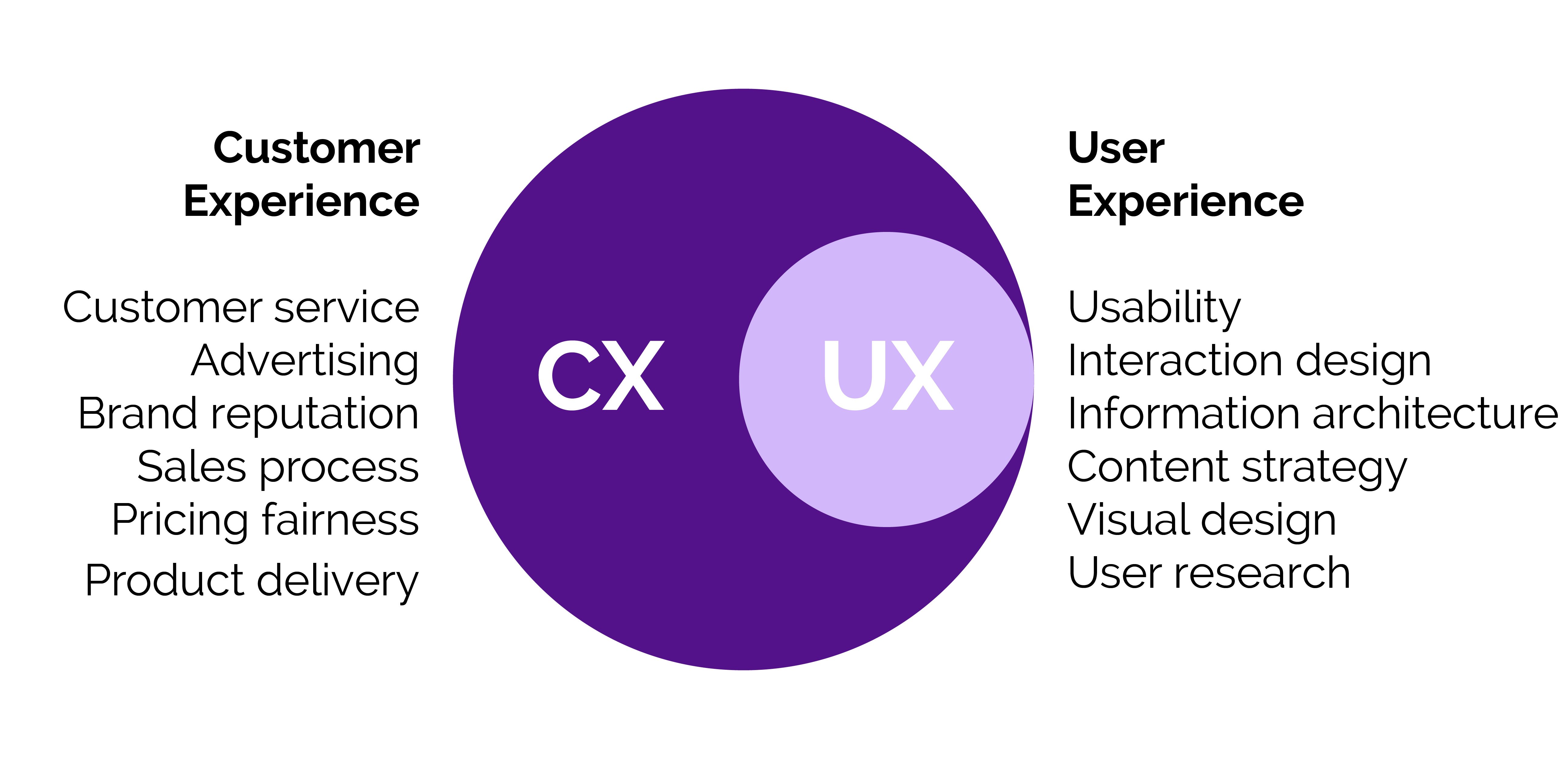
The HubSpot defines Customer experience “as the impression you leave with your customer, resulting in how they think of your brand, across every stage of the customer journey”
So it basically comes down to the perception the customer has of a brand. Customer experience is an ongoing process that grows and evolves every time the customer interacts with a company. And even if you think of your brand and customer experience is one thing, the way the customer perceives is the actual Customer Experience.
Everything a business does contributes to the way customers perceive it. A company can be good in one area but struggle with another one, which can lead to a poor experience. Providing a positive customer experience can result in additional revenue, and of course happy customers.
Customer Experience Vs. Digital Customer Experience
In a world where the line between the digital and physical worlds is getting more diffused, does it make sense to separate Customer experience (CX) and Digital customer experience (DCX)?
The broad umbrella of customer experience can cover anything from the traditional customer service channels to the new digital ones that people seem to be using more to interact with companies. While digital customer experience (DCX) focuses on the latter, including front-end services and back-office process optimization. However, the customers don’t think about their experience in terms of digital and non-digital categories, they want to interact with a company in the most convenient way, regardless of the channel.
Both concepts focus on meeting customer expectations, this is why they often overlap as digital and non-digital do in today’s world. Since the two concepts overlap, companies can consider two approaches in order to manage their customer experience:
- Focus on the customer lifecycle as a whole: this means paying equal attention to the way digital and non-digital experiences complement each other and try to optimise both
- Focus mostly on digital customer experience . According to an article in the Harvard Business Review, online and offline consumers have different needs and expectations it also states “this isn’t merely a subset of customer experience, and a good customer experience strategy doesn’t equate to a good digital customer experience strategy.” companies shouldn’t expect that their efforts to improve customer experience will translate well into digital experiences.
Nonetheless, both approaches are important, and it really depends on the audience and the maturity of the digital touchpoints. In other words, if a company has a more mature digital business, they might prefer the first approach, whereas if the customers of a company are mainly digital but their digital services are below the standards in the industry, the second approach might fit them better.
Mobile customer experience
In today’s world, mobile IS the internet. It means access anytime, anywhere and for anyone. Mobile is the best customer experience delivery platform for companies.
Mobile platforms offer more functionality and are more engaging, flexible and powerful. Considering the value of all the data these devices can gather, mobile becomes the center of the customer experience strategy. The data gathered offers powerful insights and competitive advantages for businesses.
So when thinking about customer experience, mobile is a MUST for companies who want to interact and connect on a deeper level with their customers.
Usability
Usability is an essential part for a good Customer experience. Websites and apps should be intuitive and easy to navigate, the users should be able to understand clearly which steps are needed to take to achieve their goals. A good CX can be achieved through the creation of a user-friendly design on websites or apps. Usability testing is used to evaluate how easy is to operate a product or service. Easy-to use websites can be built using these tests, thus ensuring that every customer achieves their goals in the site.
User onboarding
Onboarding is the process of teaching new customers how to use a product or service. Having a great user onboarding isn’t only a matter of having a great UX design or product tour, but to empower customers by providing them with all the resources to onboard autonomously from the very first interaction.
User Experience (UX) Vs. Customer Experience (CX)
User experience (UX) and customer experience (CX) are two terms related to the experiences – customer and user. They are different, yet they must work together for a company to succeed. User experience deals with customers’ interactions with a product, website, or app; the design of the interface – its usability, information architecture, navigation, visual hierarchy, etc. On the other hand, Customer experience focuses on the general experience a customer has with a company.
While User experience is measured in things like abandoment rate, error rate, and clicks to completion; customer experience is measured by net promoter score, customer loyalty , and customer satisfaction. Both are immensely important and can’t truly exist and thrive without each other.
